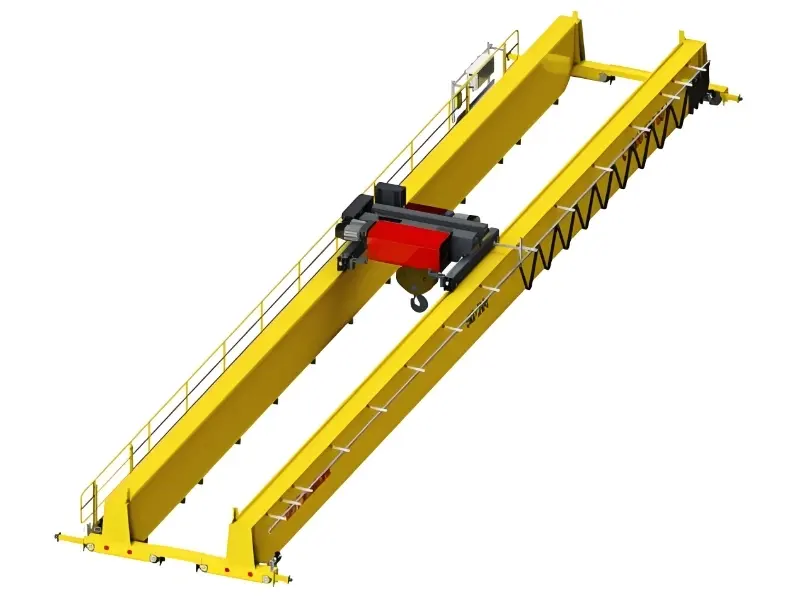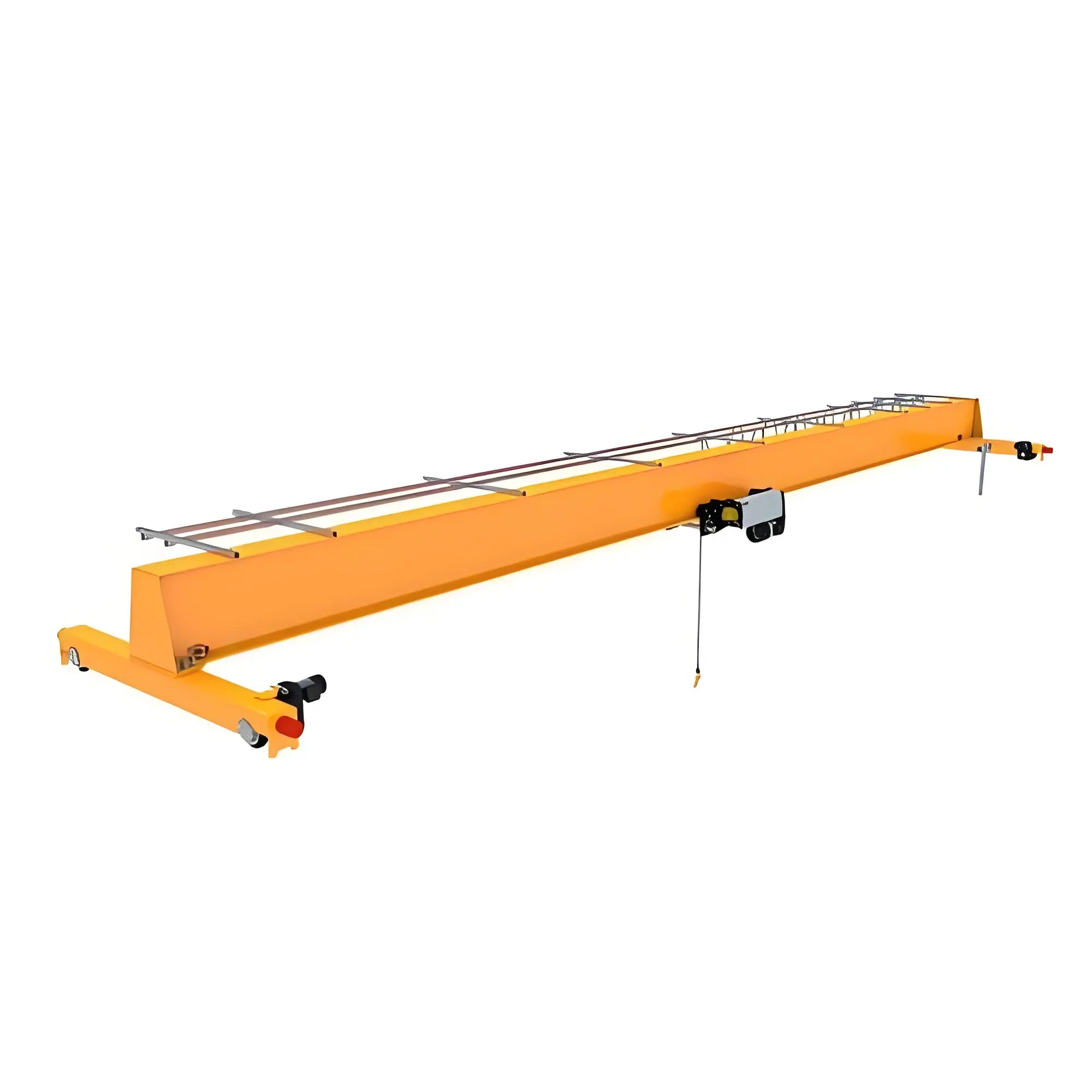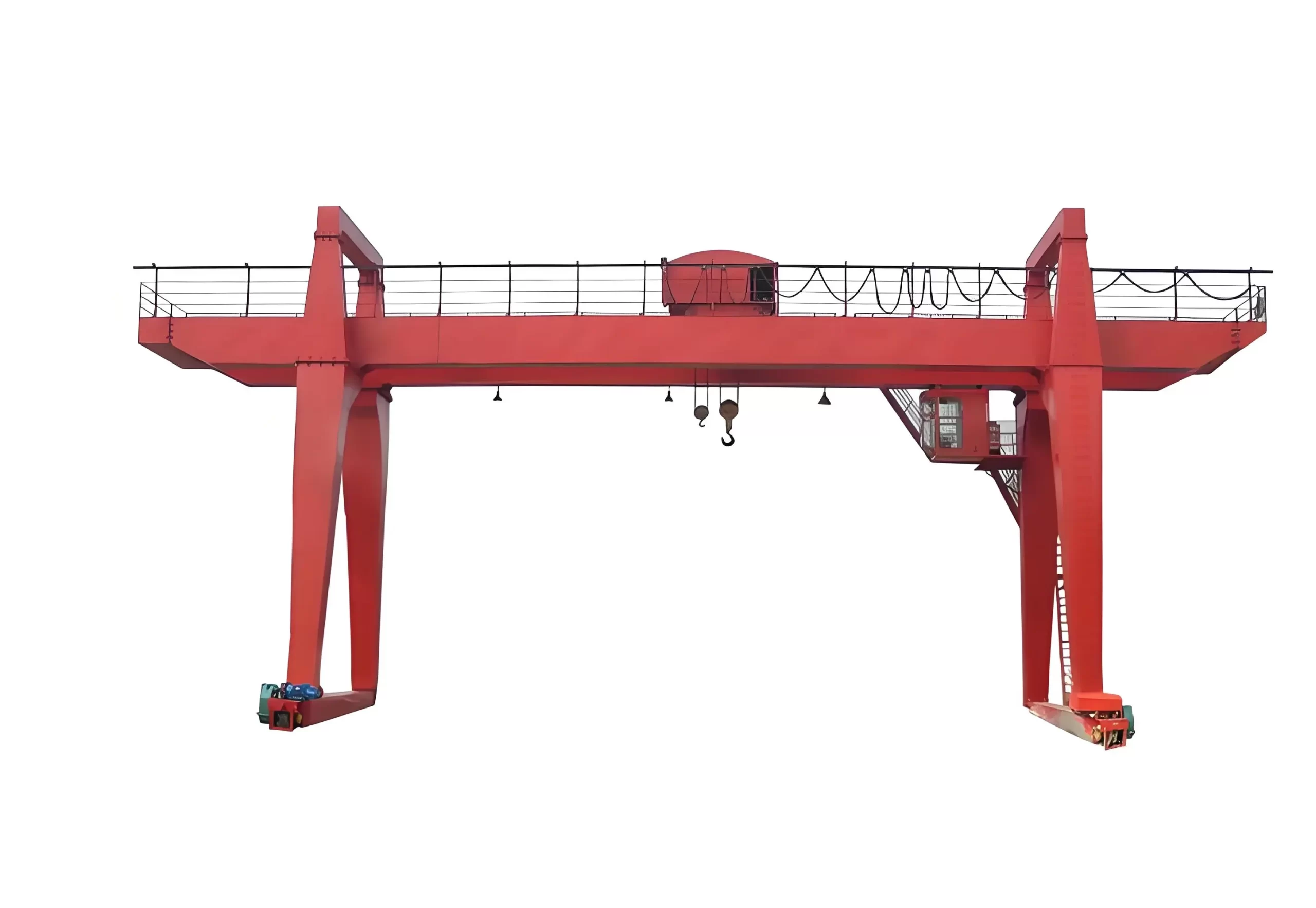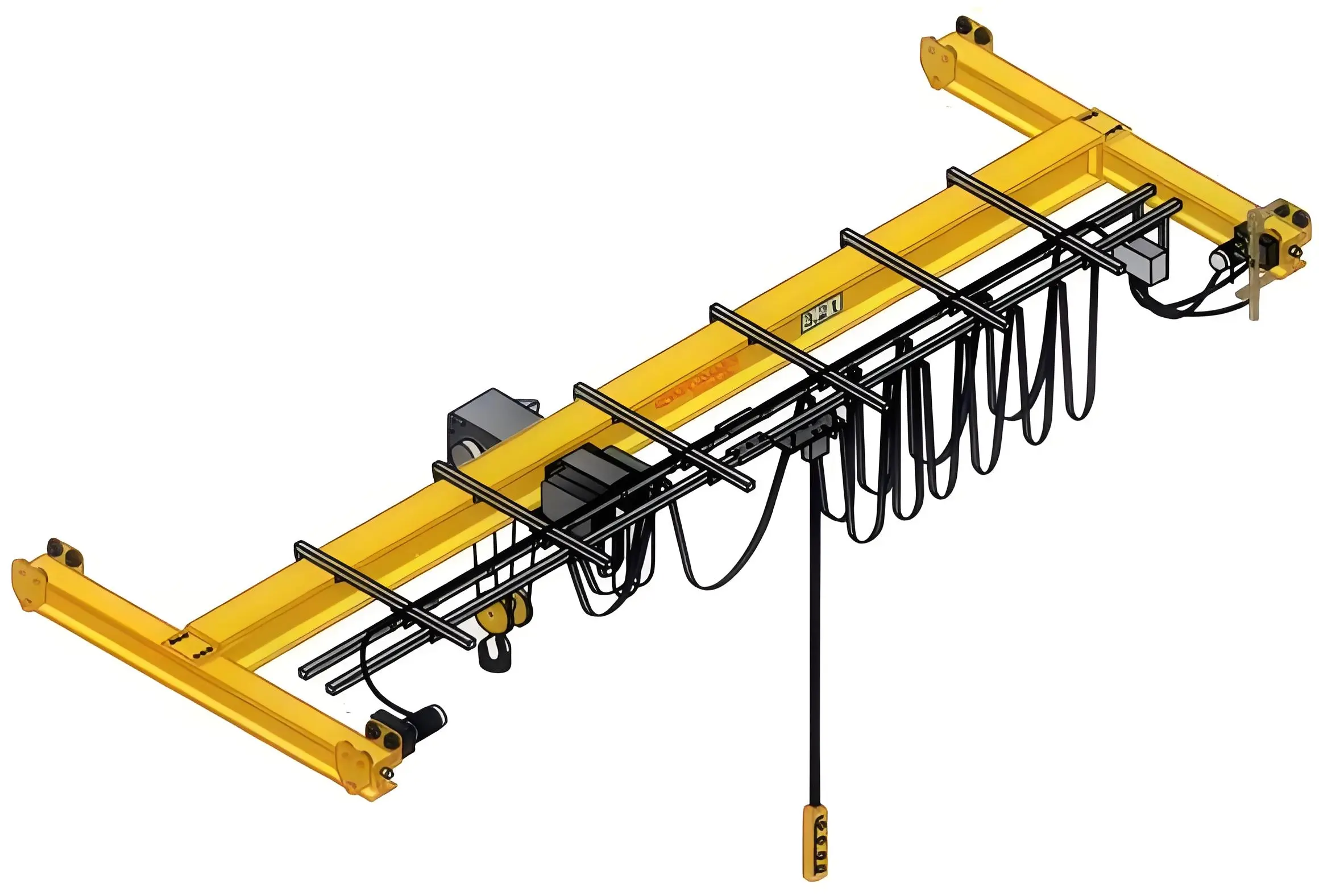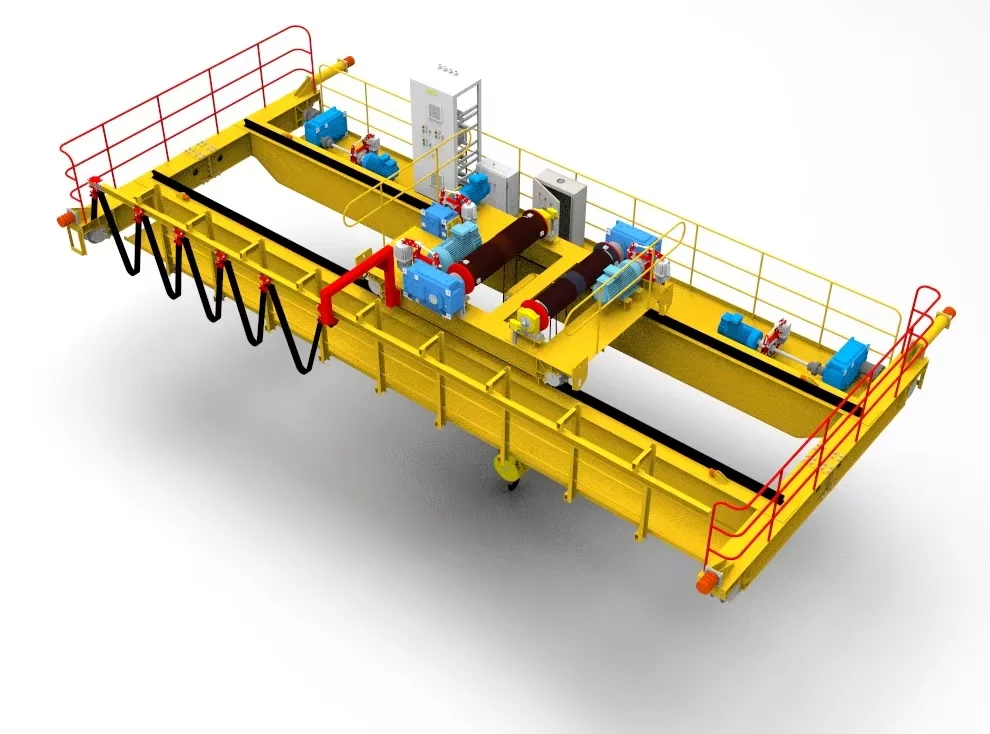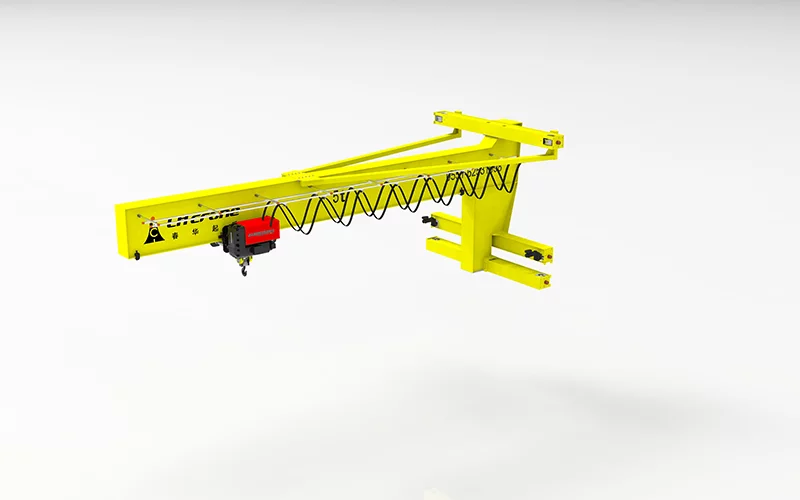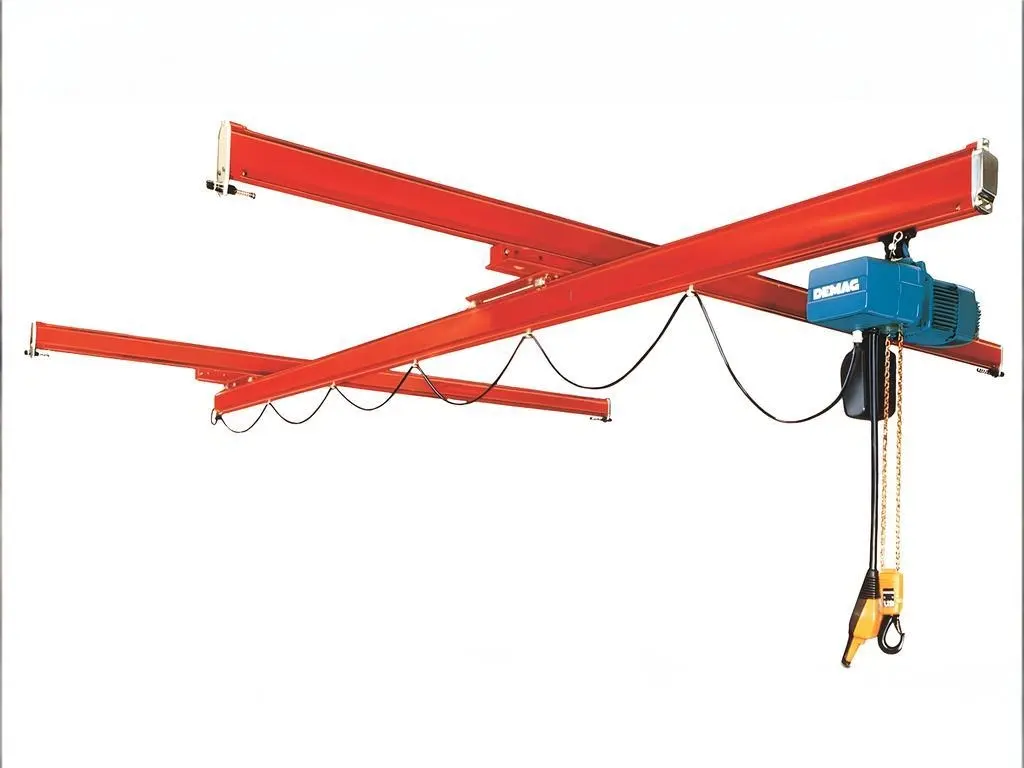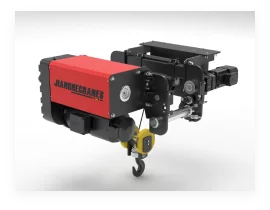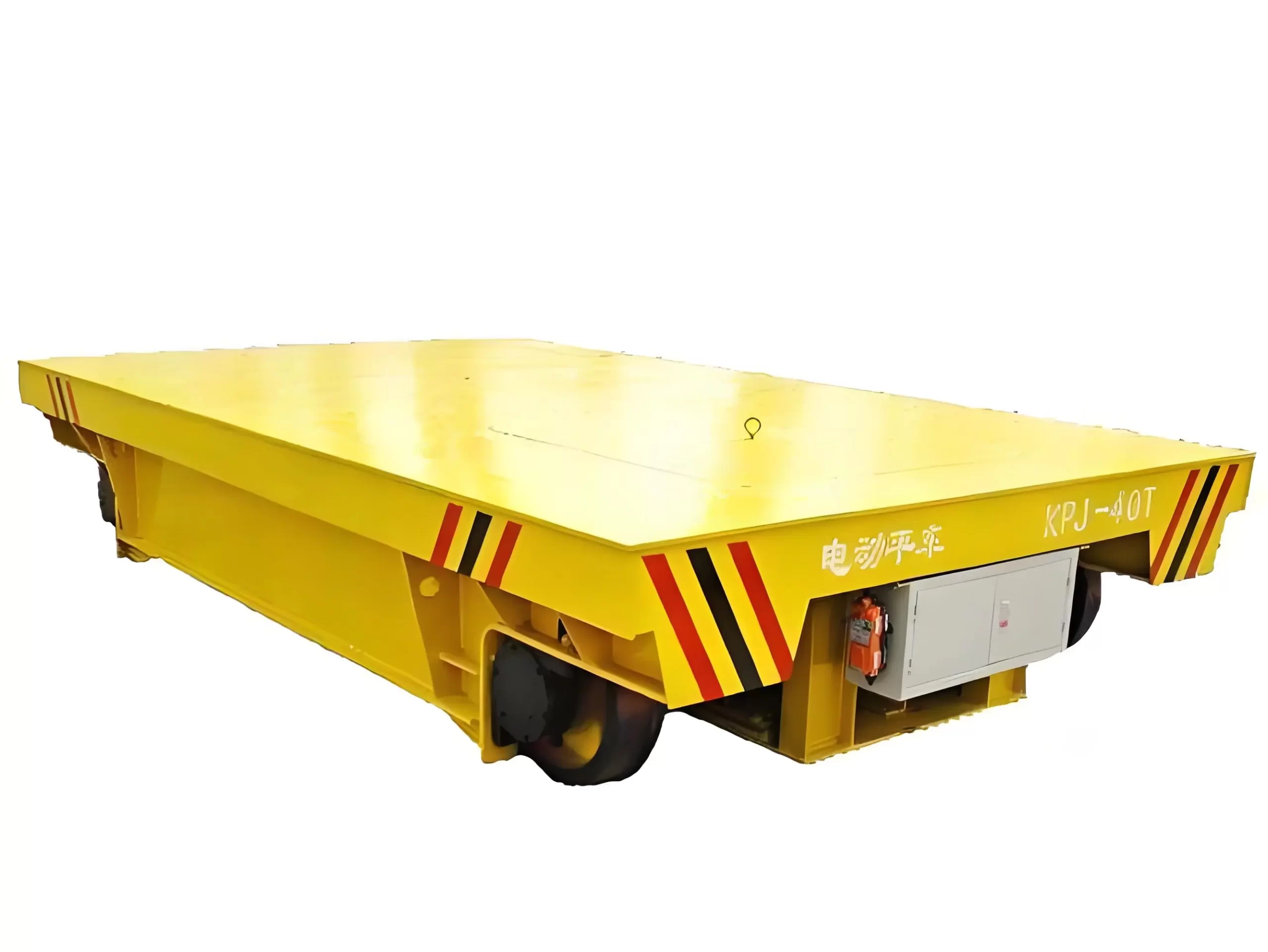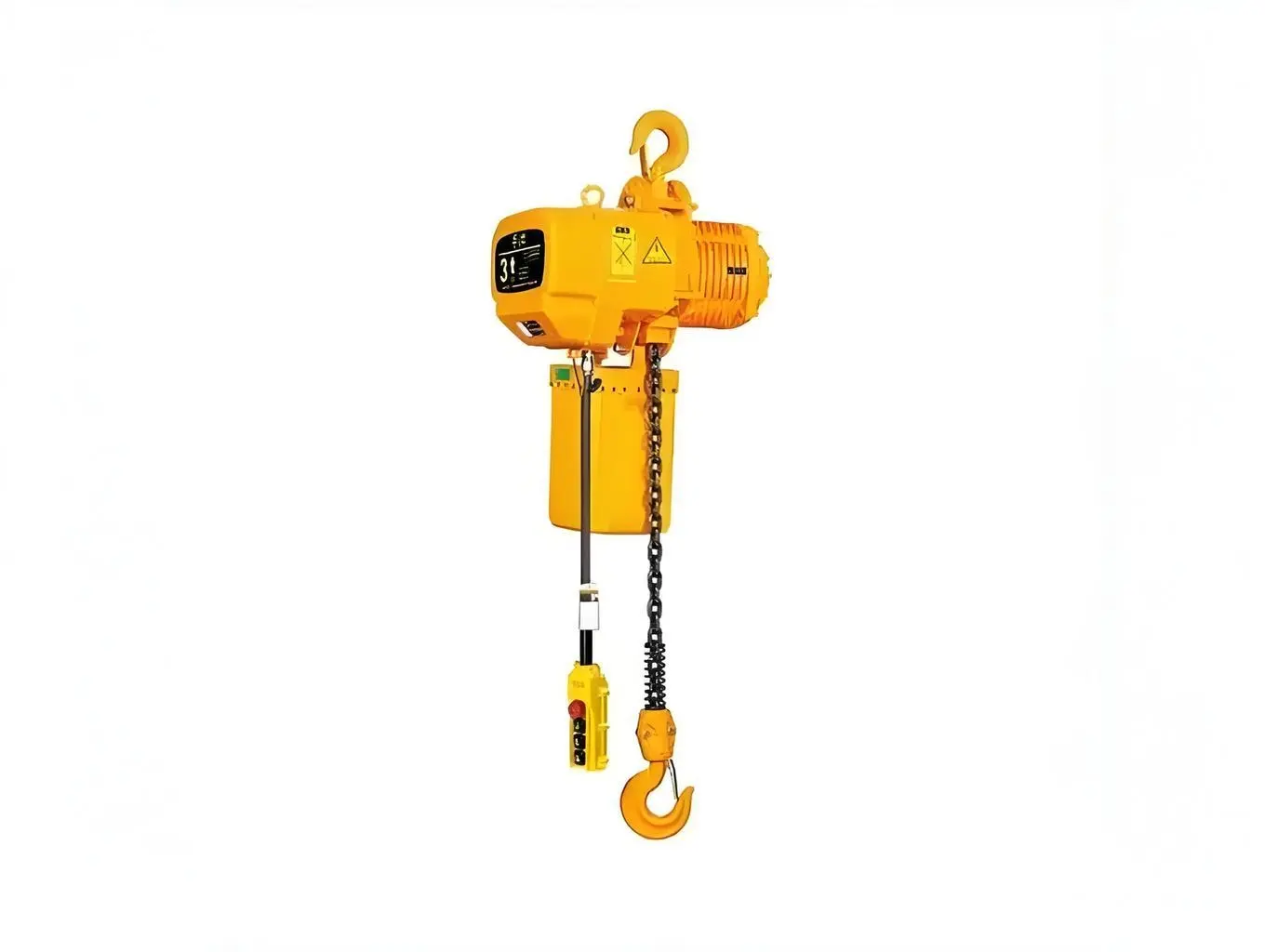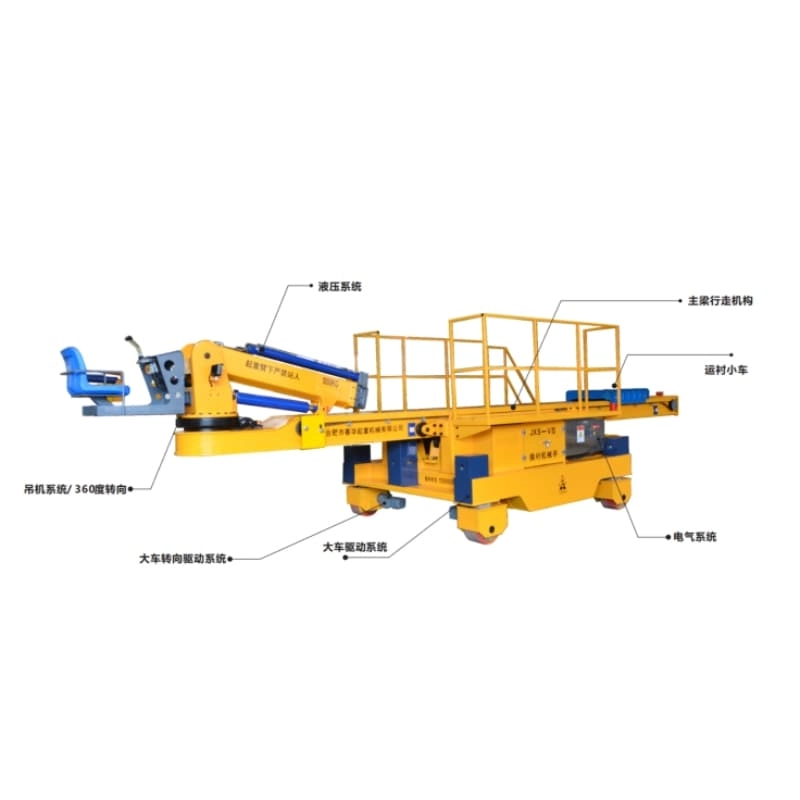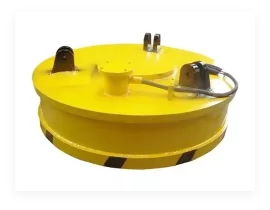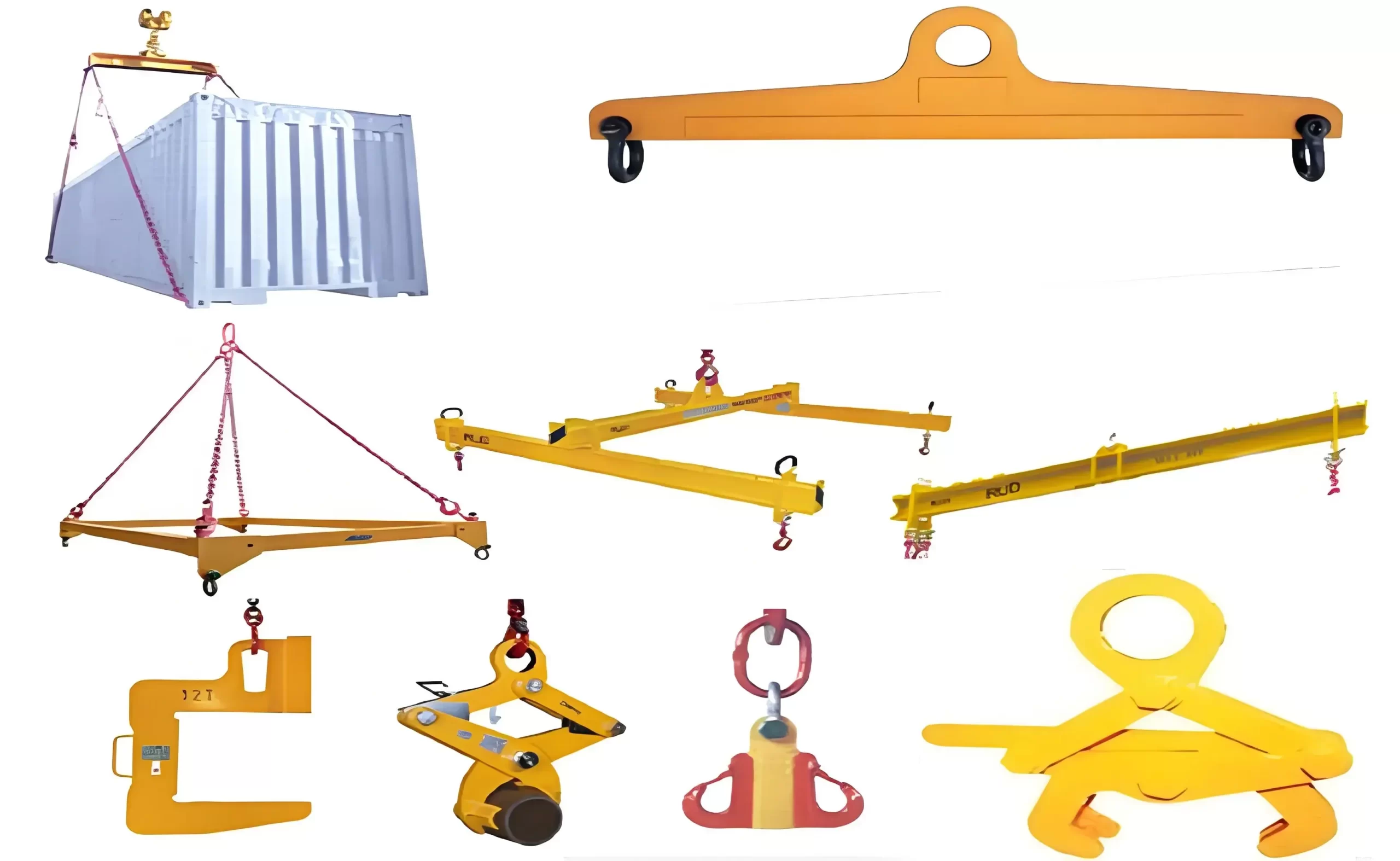There are many types of suspension cranes, each with different designs and uses to suit different working environments and needs.
Common types of suspension cranes:
Suspended bridge crane
Features: Suspended bridge cranes are usually supported by two rails, with the boom suspended on the bridge and can move laterally between two supporting points.
Application: Widely used in workshop production lines, warehouses, steel mills, shipyards and other places.
Single girder suspension crane
Features: The crane has only one main beam in its bridge, which is usually suitable for lighter loads. The structure is relatively simple and the cost is low, but it can still provide efficient lifting functions.
Application: Suitable for environments with lighter loads, such as small factories, warehouses, etc.
Double girder suspension cranes
Features: Double beam suspension crane has two main beams and is usually used for heavier loads. The two main beams can bear greater weight and its structure is more stable, suitable for places that need to carry a larger lifting weight.
Application: Widely used in steel mills, heavy manufacturing plants, large warehouses, etc.
Suspended single girder crane
Features: The design is similar to that of a bridge crane, but the suspension method is different. The boom of a suspended single girder crane is directly hung on the track through a suspension system. Its design is suitable for places where ground space needs to be saved.
Application: Commonly used in small spaces or places where too high lifting capacity is not required.
Light suspension crane
Features: This type of crane is used in places with light loads, usually with only one beam and relatively low lifting capacity. The design is simple and economical, suitable for light load lifting in a short time.
Application: Suitable for warehouses, shops, laboratories, assembly lines and other places.
Semi-hook crane
Features: The design of semi-hook crane combines the features of bridge crane and suspension crane, usually only part of the bridge is suspended on the track, and the other part is supported on the ground. This structure allows a larger load capacity, but also retains the space-saving advantage of suspension crane.
Application: Suitable for industrial environments that require higher load bearing, such as steel mills, machinery processing plants, etc.
Electric suspension crane
Features: The operation of this crane is realized by an electric drive system, which has the functions of automation and remote control. Electric suspension cranes can work efficiently for a long time and are suitable for environments that require long-term high-load operation.
Application: Used in heavy industry, logistics centers, mines and other industries that require efficient lifting.
Different types of suspension cranes are mainly distinguished by their structural design, load-bearing capacity, place of use and load characteristics.
Choosing the right type according to actual needs can improve work efficiency and safety.

